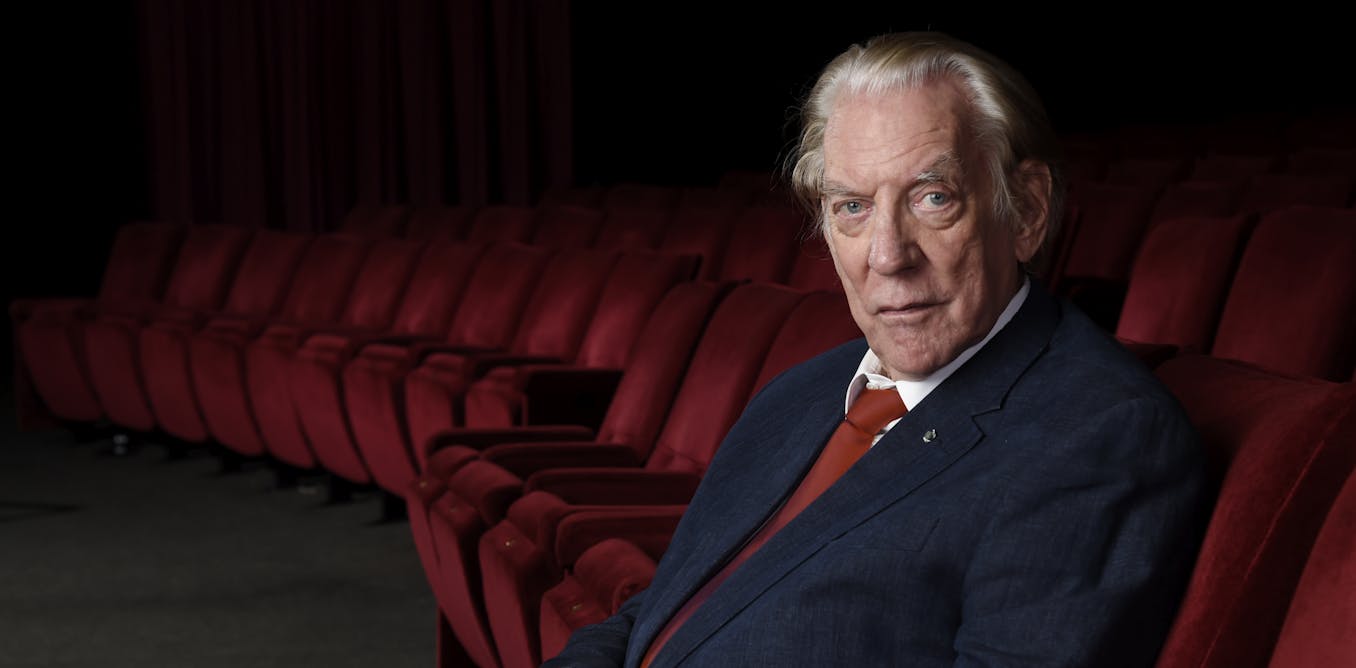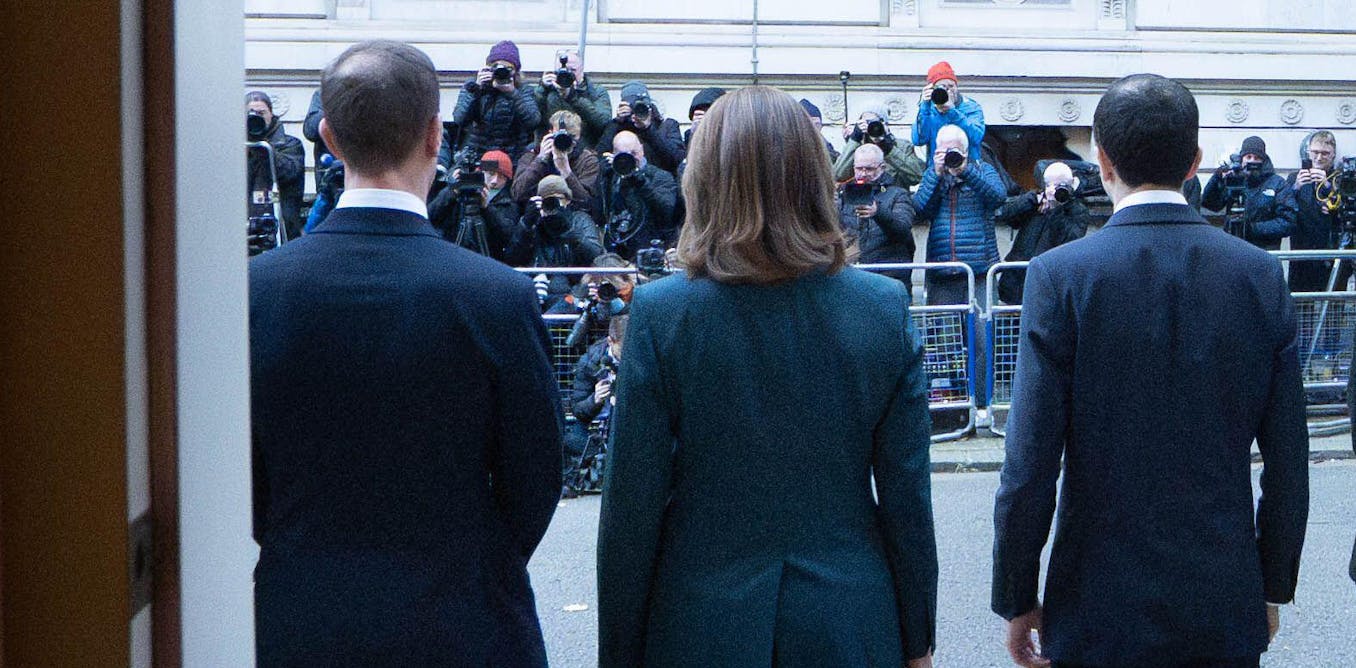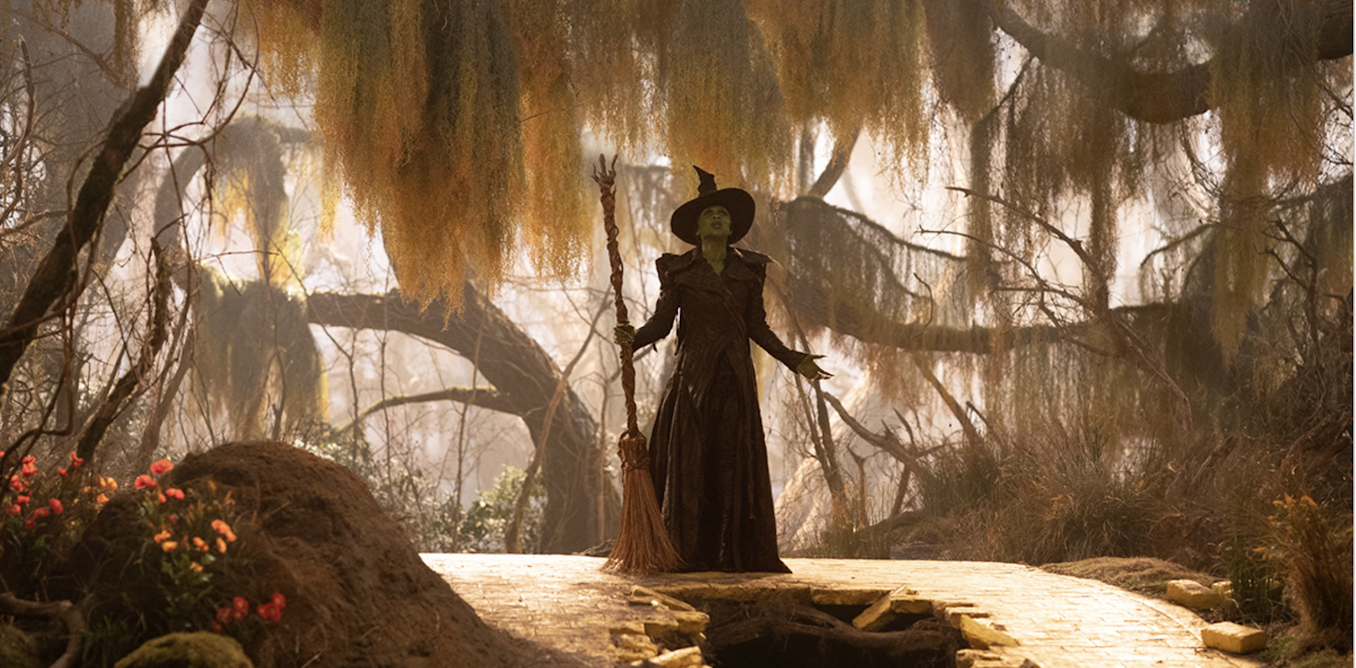I don’t think Hollywood knew what to do with Donald Sutherland, who has died at age 88. He was not your classically handsome A-list actor like contemporaries Warren Beatty or Robert Redford, nor was he solely suited to the “tough guy” roles such as Robert De Niro, Al Pacino or Gene Hackman. Instead, his early film career was defined by eccentric, peculiar or “quirky” roles, roles that seemed to sit well with him for the rest of his life.
Born in Canada in 1935, Sutherland began his career in television in the 1960s. His first film was a small role in The Dirty Dozen (1967) alongside Charles Bronson and Lee Marvin.
Sutherland’s breakout year was 1970, in which he took major parts in two hit films, the Clint Eastwood vehicle Kelly’s Heroes, where he played tank commander Oddball, and Robert Altman’s M*A*S*H, where he played “Hawkeye” Pierce. Both were offbeat 60s hippie-ish characters.
These idiosyncratic characters seemed to work well with Sutherland, and he take such roles time and again.
The 1970s saw Sutherland play the leading man in a range of films such as the psychological horror Don’t Look Now (1973), the second world war feature The Eagle Has Landed (1976) and one of his stand out films of this era, Invasion of the Body Snatchers (1978).
The last shot of this film, with a now alien Sutherland shrieking at one of the last humans left in the world, is regarded as one of the most shocking and most perfect endings to a film.
A masterful actor
My most loved and admired Sutherland starring film is Alan J. Pakula’s 1971 neo-noir psychological thriller Klute.
Co-starring Jane Fonda, with whom he had a brief romance during and after filming, this film stands out as a masterful piece of suspense cinema, with Sutherland as a Pennsylvanian private detective sent to New York to track down a missing company executive.
His main lead is a sex worker who has been receiving obscene letters – possibly from the executive. Sutherland plays the role of John Klute so understated, so cerebrally, you marvel at how Sutherland is able to deliver emotion and information to the audience in such subtle ways – a slight tilt of the head, a longing stare, a narrowing of the eyes.
In every scene of the film, Sutherland uses a huge range of gentle, underplayed expressions to reveal that this apparently staid and cold inscrutable detective is really an emotionally fragile and vulnerable loner. Sutherland peels the layers back slowly.
It really is a masterclass in acting.
The role of the supporting actor
From 1980 onwards, almost every film he appeared in was in a supporting role but he didn’t play second fiddle to any star.
His presence on the screen demanded as much attention as lead actors he worked with during this time including Brando, Stallone, De Niro or Eastwood.
But unlike his contemporaries, who would become strongly identified with specific characters (think Dustin Hoffman as Ratso, Dorothy or Ray), when you look back on Sutherland’s career, I can’t think of one particular character he played that audiences strongly identify him with.
Say the name “Donald Sutherland” to someone and a whole barrage of different characters come to mind, but no particular one stands out.
This was the magic of Sutherland’s acting. Unlike Hoffman, Sutherland was very comfortable playing smaller roles in films, but roles that he could own. This is perhaps why we don’t easily identify Sutherland’s characters. Hoffman developed memorable screen characters, Sutherland made screen characters appear as though they were actually real people.
Which goes to show that he wasn’t any one of his particular characters, he was all of them.
A man of versatility
Sutherland also had the skill to constantly introduce himself to younger audiences of each generation.
Films such as Animal House (1978), Buffy the Vampire Slayer (1992) and The Hunger Games franchise (2012–15) allowed Sutherland to appear in the minds of new audiences of different eras, while staying in contact with the old ones of eras past.
It was one of Hollywood’s greatest shames that he was never nominated for an Academy Award (although he was given an honorary one in 2017).
He should have won, or at least been nominated, for a number of his standout roles, including in Ordinary People (1980), Six Degrees of Separation (1993) and Disclosure (1994).
Looking back on his vast array of roles over 50 years, one thing jumps out at you about Donald Sutherland: his versatility. Perhaps this was the key to his career.
He was never pigeonholed into a certain defined type of actor, and his roles were never the same sort of character. He could play goofy, dramatic, scary, over-the-top, subtle, tough or gentle.
In the end, Hollywood didn’t know exactly what to do with Donald Sutherland, so they did everything with him.

The post “Hollywood didn’t know exactly what to do with Donald Sutherland – so they did everything with him” by Daryl Sparkes, Senior Lecturer (Media Studies and Production), University of Southern Queensland was published on 06/21/2024 by theconversation.com

































